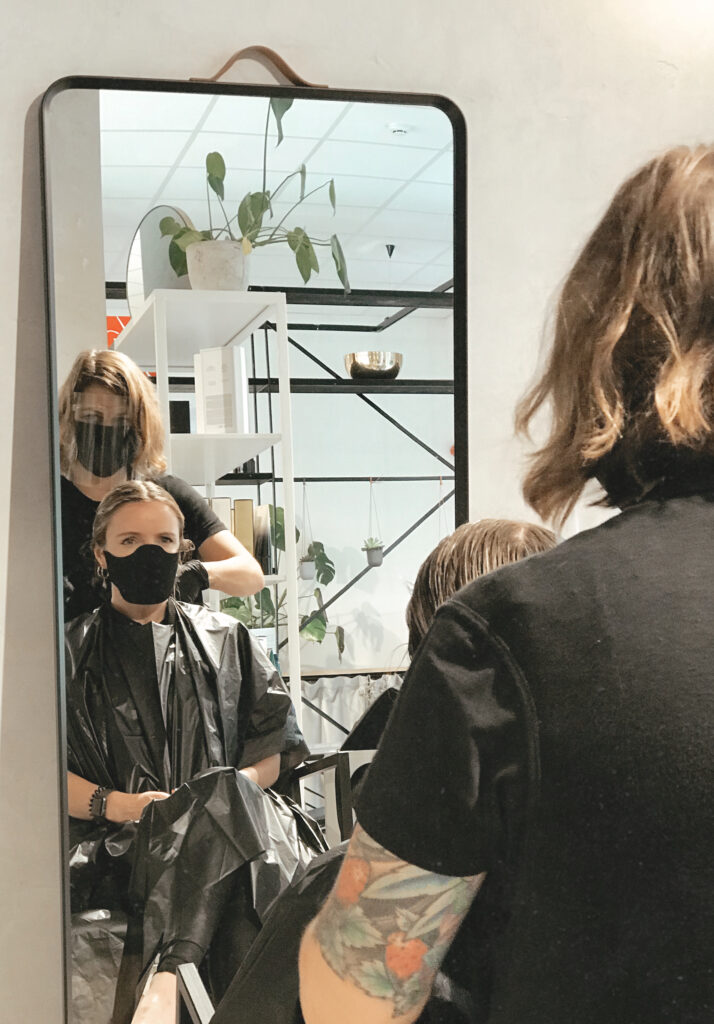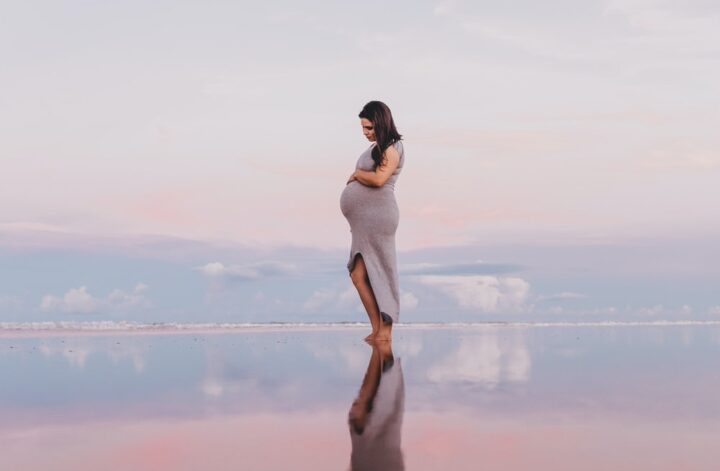Keratin; some swear by it and others swear against it. In this blog we take an in-depth look at keratin, how does it work and how to take care of your hair after a treatment. Most of all, is it safe?
Keratin is a protein which is found in our hair naturally. Keratin treatments are designed to bond the protein to the cuticles of our hair, smoothing and flattening them. This results in soft, shiny hair which is easier to manage and frizz free.
The treatment is extremely popular but has had it’s fair share of controversy and bad press, mostly due to an ingredient called formaldehyde. It has also been said to cause breakage and potentially long term damage to our hair. In this post I will cover everything you need to know before doing a keratin.
What is a keratin treatment and how does it work?
Keratin is a semi-permanent smoothing treatment. It works by bonding proteins (keratin) to the cuticles of each individual hair. When our cuticles are smooth, our hair is softer, shinier and more manageable. When done correctly in a professional environment, keratin eliminates frizz while keeping the natural form of your hair.
While there are keratin treatments that will actually straighten your hair, keratin is not a straightener. Rather, it’s a smoothing treatment, or as some people call it a ‘permanent blow out’ (even though it’s not permanent!). The treatment will drastically reduce the amount of time it takes to blow dry. Frizzy and problematic hair dries smooth and soft with very little effort.
The fact that it is semi-permanent allows for you to discontinue using the treatment at any time without any transitional issues. Permanent straighteners are notoriously difficult to grow out. Curly roots and straight ends are extremely hard to manage. This results in many people getting stuck in a trap of straightening their hair with no way to stop. With keratin this is not an issue.
Sounds like a dream? This treatment comes with it’s fair share of controversy: formaldehyde being the biggest.
What is formaldehyde and why is it in (some) keratin treatments?
Formaldehyde is toxic and known to be a human carcinogen. It is used for production of industrial resins, cars and even fabrics. Its use has been restricted in the EU. Any product with higher than 0.05% of formaldehyde has to display a warning. However, an amount of less than 0.02% is allowed.
Today many keratin manufacturers produce formaldehyde free keratin. As a client researching where you would like to have your keratin done, this should be one of the first questions you ask. In addition, you can ask your stylist what brand of keratin they use and check on the manufacturers website for the ingredients.
There are various articles online claiming that formaldehyde free keratin treatments are less effective. In my experience this is simply not the case. I have worked with Nanokeratin as well as Lasio Tropic, both 100% formaldehyde free and have achieved fantastic results.
While the claims that formaldehyde is dangerous and unnecessary are true, there are much safer alternatives. The answer lies in our understanding of the products being used. Once armed with this knowledge we are able to make more informed, safer choices.
Can keratin cause hair loss?
In order to seal the keratin treatment into your hair and activate it, a hot iron is used. This process needs to be done with caution and care, by a professional. The reason for this is that most manufacturers instructions are to iron each section around 7 times from roots to ends.
There are many considerations when ironing hair this much. The first is temperature. The temperature should be controlled with specific caution depending on the hair type. For blonde or fragile hair it should be no higher than 150°c. Color processed hair should be no higher than 180°c, where natural, thick hair can be heated up to 230°c.
This is of the utmost importance! If you were to flat iron fragile hair at 230°c or higher it could most certainly cause breakage. Overheating is the most common cause of hair breakage during a keratin treatment. The other potential cause of hair loss / breakage is poor consultation or using the incorrect type of treatment for your specific hair type.
How to select the correct keratin type for your hair

Most professional keratin brands have several kinds of keratin for different hair types. These will vary in strength, moisture content and the application process can also vary. The factors your stylist will consider during the consultation process determine which specific product is best for your hair. Some of the considerations are:
- Is your hair previously chemically treated?
- How thick/ fine is your hair?
- How course / fragile is your hair?
- Do you have bleach in your hair?
Porosity/ Density/ Texture/ Elasticity
Clients expectations and commitment level (ie: how much time do you spend on your hair)
This is one of the main reasons it is extremely important to choose an experienced, professional hairstylist. Keratin is expensive but fixing a bad job is much more expensive, both financially and emotionally.
It is not the keratin itself which causes breakage when done correctly according to manufacturers instructions. Just as important as making sure the product being used is formaldehyde free, it is important to choose a stylist that is knowledgeable and experienced with keratin treatments.
Related Questions
How long does keratin last?
This will vary depending on the brand and type of treatment you do. Some have smoothing effects that last up to 9 months. Others last 2-4 months. There are also express keratin treatments which are gentler for your hair and usually don’t require flat ironing which will last 6-8 weeks.
How do I take care of my hair post-keratin treatment?
Your treatment will last longer if you use a high quality SLS (sulfate) free shampoo and try to shampoo less frequently (I discuss this in more detail here). I would advise as a general rule to shampoo your hair approximately twice a week and to use a high quality Dry Shampoo between washes.
Your stylist will advise how soon after the treatment it is safe to shampoo, some treatments require a waiting period where some are washed off immediately.
As always, try to minimize heat styling and when you do use heat, don’t forget your heat protector!
Will keratin affect my color?
Keratin can affect your color. For instance, on grey or white hair it can cause a ‘yellow’ tone. Despite this, it is important to color your hair before doing keratin. Both color and keratin can be done on the same day as long as the color is done first. The other option is to wait two weeks between keratin and color.
What are the best straightening irons for my hair?
When shopping for straightening irons it is important to make sure they are ceramic irons that are heat controlled to prevent burning your hair. GHD are a reliable brand that are very high quality and a reasonable price. When flat ironing your hair, remember to make sure your hair is 100% dry and you have used your heat protector.
Can anyone do keratin?
Keratin is not recommended for pregnant or breastfeeding women.
If your hair is extremely vulnerable and damaged, the flat ironing could cause further damage to your hair. It would be advisable to do an express keratin without flat ironing until your hair is in better condition.
Is keratin good for your hair?
If applied correctly in a professional environment, keratin can greatly improve the condition and manageability of your hair. It can be life changing for people whose hair is time consuming and problematic. Keratin smoothing treatment can drastically lower the amount of time you spend on your hair, and as we know time is money, honey!



